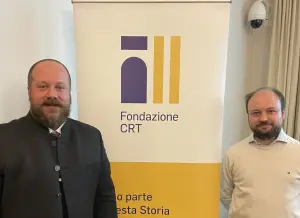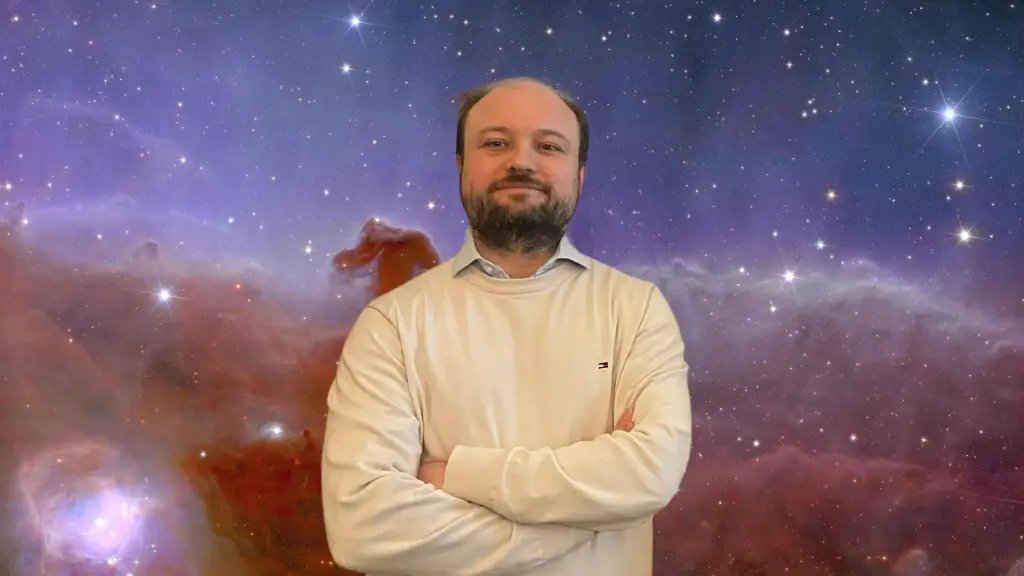Since July 2023, the European Space Agency’s (ESA) Euclid Telescope has been in orbit, undertaking a mission as precise as it is ambitious: to study the expansion of the universe, dark matter, and dark energy. This groundbreaking effort promises to rewrite our understanding of the universe and the fundamental laws of physics.
Euclid is capturing astronomical images of vast sections of the sky at an unprecedented resolution, aiming to create the most extensive 3D map of the universe ever produced. While only 1% of the expected data has been collected in its first year, Euclid has already delivered spectacular images, marking the beginning of a new chapter in understanding the forces shaping the cosmos.
In Italy, key contributors include the Italian Space Agency (ASI) on the technological front and scientific institutions such as INAF and universities in Rome, Trieste, Bologna, and Milan. Among the observatories involved, the Astronomical Observatory of the Autonomous Region of Valle d’Aosta stands out, with support from Fondazione CRT.
To better understand the mission’s scope, we interviewed Matteo Calabrese, a researcher at the Astronomical Observatory of Valle d’Aosta. A staunch believer in Science with a capital “S” as a unified entity across disciplines, Matteo emphasizes the role of scientists as curious observers of the world in all its facets. He shared his privileged perspective on Euclid’s advanced technologies, future prospects, the importance of scientific communication, and Italy’s crucial contribution to this extraordinary cosmic endeavor. Enjoy the read!
Since July 2023, the Euclid Space Telescope has been exploring the universe’s boundaries with its 600-megapixel camera. What is its mission’s objective, and what are the possible scientific implications?
Euclid’s primary goal is to study dark energy and dark matter—two mysterious components of the universe whose effects we observe but whose nature remains unknown. Much like its namesake, the ancient Greek mathematician, Euclid aims to understand the geometry of the universe on a large scale by analyzing how dark energy and dark matter influence the formation and evolution of cosmic structures. The scientific implications are immense: these discoveries could fundamentally reshape our understanding of the laws of physics.
What technologies aboard the satellite make Euclid a unique mission?
Euclid observes the cosmos with two primary instruments: a camera (VIS) and a near-infrared spectrometer (NISP). The camera captures high-resolution images of distant galaxies, while the spectrometer records their emission spectra, enabling measurements such as galaxy velocities and distances. This combination allows for the creation of 3D maps of the universe and detailed studies of dark matter and dark energy.
How are these technologies helping us better understand dark matter and dark energy?
Euclid studies the distortion of light from galaxies caused by dark matter’s gravity and how dark energy accelerates the universe’s expansion. In its first year, Euclid has already collected critical data to measure the large-scale distribution of dark matter and better understand the role of dark energy in cosmic evolution. We are just beginning, and it will take months of data collection to start answering the mission’s scientific questions.
Euclid has so far completed 1% of its data collection but has already produced stunning images. What are the most exciting discoveries so far?

The first key discovery is that the quality of the images and spectra captured by the satellite meets expectations. This means we can answer the questions we set out to address because the observations are precise and reliable.
Exploring the invisible universe is a complex challenge. What are the main difficulties Euclid is facing or might face?
One of the biggest challenges is managing the enormous amount of data Euclid is collecting. The images and spectroscopic data require immense computing power for analysis, along with the dedication and care of scientists in the consortium. Additionally, we are still learning how Euclid truly works. Despite intensive preparatory work on Earth, the instrument’s real behavior and systematic errors can only be identified in orbit. Using the instrument in real conditions is essential to fully understand its unique characteristics and optimize its performance.
How does the collaboration between ESA, international research teams, and centers of excellence like the Valle d’Aosta Observatory work?
Collaboration among scientists is crucial to Euclid’s success. Researchers from various countries and scientific institutions, including the Valle d’Aosta Observatory, work together to analyze data, develop theoretical models, and refine technologies. The mission is managed by the Euclid Consortium (EC), which includes researchers, engineers, and technicians from 14 European countries (including Italy) as well as Canada, the USA, and Japan. The EC oversees the design, construction, and management of scientific instruments, data production, and analysis, coordinating the efforts of 1,650 experts in various fields.
What is the specific contribution of the Italian team, and particularly your work, to the Euclid mission?
Italy, along with France and the United Kingdom, plays a leading role in the Euclid mission. With support from the Italian Space Agency (ASI), Italy has taken on key responsibilities, such as defining the survey strategy (mapping the universe) and managing the scientific aspects of the ground segment and instrument operations, carried out by researchers at the National Institute for Astrophysics (INAF).
I work on numerical simulations within a group called CMBX, generating “artificial” data to estimate the effects of dark matter and dark energy in cosmological models and optimize the satellite’s observations. I collaborate closely with Luigi Guzzo, a professor at the University of Milan, INAF researcher, and scientific coordinator of the Euclid mission. Prof. Guzzo is also the president of the Scientific Committee of the Clément Fillietroz Foundation, which manages the Valle d’Aosta Observatory and the Lignan Planetarium.
For a project of this scale, how important is it to communicate results to the public? How do you balance the technical aspects with the need to make these topics accessible?

Communicating results is crucial—not just to inform the public but to spark interest in science. Balancing scientific rigor and accessibility involves simplifying complex concepts without losing depth. The challenge is to translate data into compelling stories that can captivate even those without a scientific background. Scientists are curious by nature, and public outreach fundamentally involves sharing that curiosity.
As part of our participation in Euclid, supported by Fondazione CRT, we plan to host outreach events for those interested in learning more about cosmic studies.
What could be the long-term implications of Euclid’s discoveries for our understanding of the universe and fundamental physics?
Euclid’s discoveries could provide critical answers about the nature of dark matter and dark energy, transforming our understanding of the laws governing the universe. They could also pave the way for new physical theories that may one day replace or expand upon what we know today. It is quite literally a glimpse into the future.
Looking ahead, what are the next steps for the Euclid mission, and what are its priorities in collecting and analyzing data?
In the coming years, Euclid will focus on acquiring increasingly precise and comprehensive data to map the universe in 3D. The priority is to gather detailed information on the distribution of dark matter and the acceleration of the universe’s expansion. Developing and applying advanced algorithms to analyze the collected data will also be crucial for drawing more refined scientific conclusions.
Discover all the details and updates on the Euclid Mission on ESA’s webiste.

Throughout his career, Matteo has been a Visiting Student at the Max Planck Institute for Astrophysics in Munich, Germany, and a postdoctoral researcher at the University of Milan. He is the author and co-author of numerous publications in international scientific journals, covering topics from cosmology to cultural heritage sciences, statistics, and economics.


